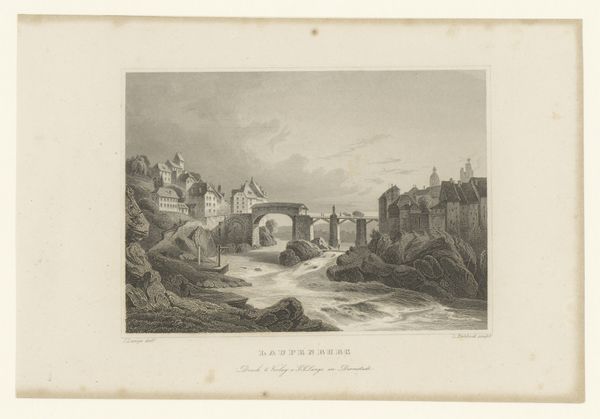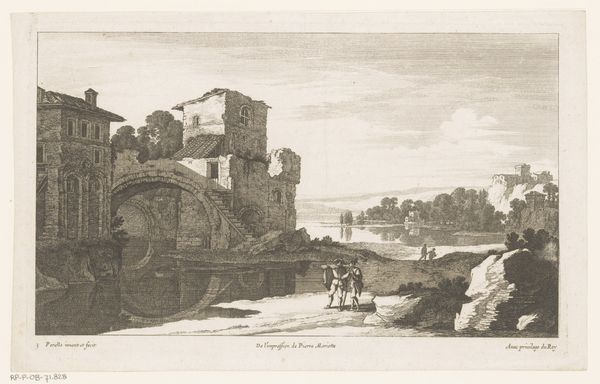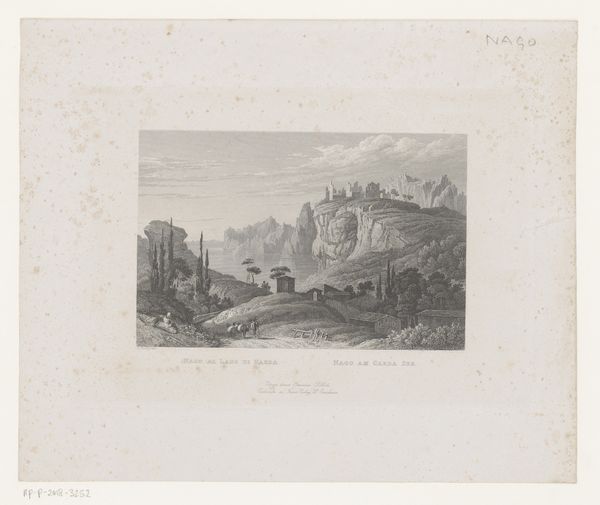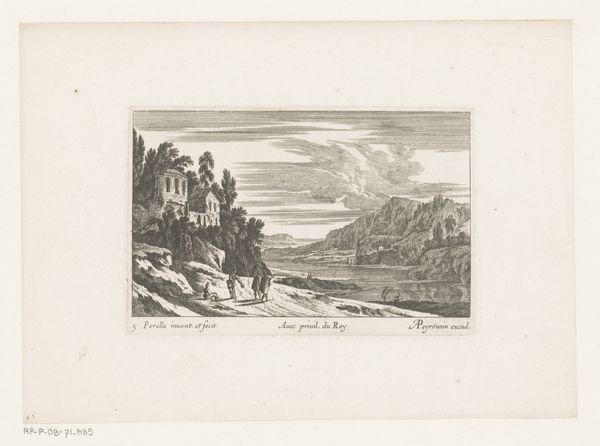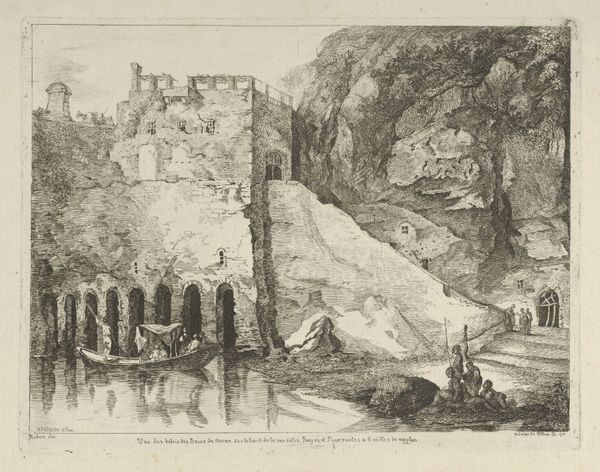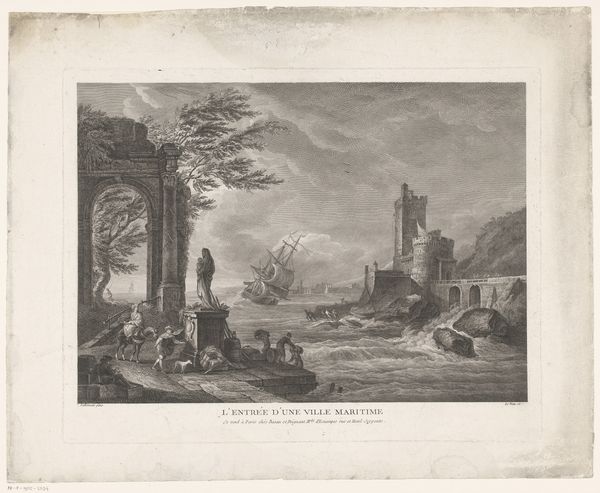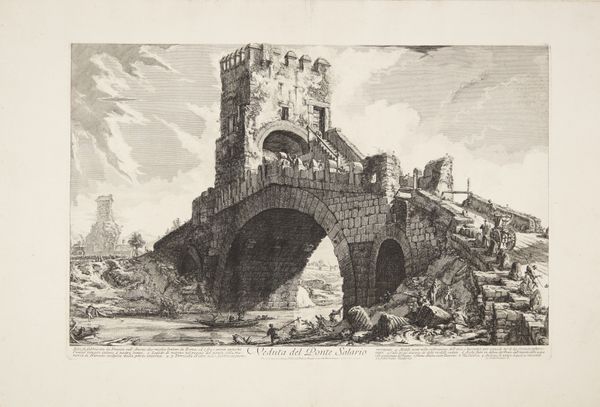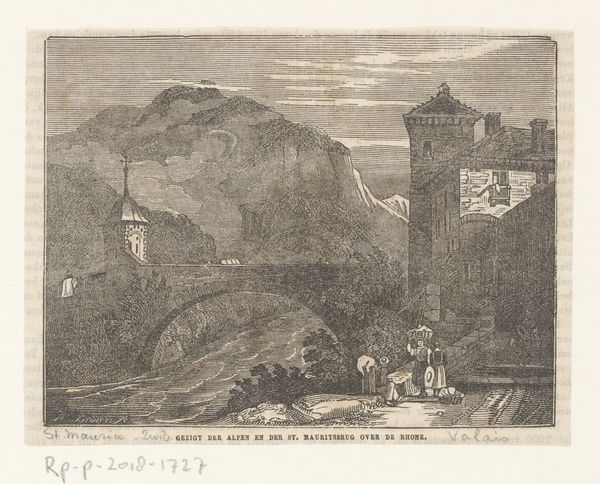
Lauffenbourgh on the Rhine (Liber Studiorum, part VI, plate 31) 1811
0:00
0:00
drawing, print
#
pencil drawn
#
drawing
#
toned paper
#
light pencil work
# print
#
pencil sketch
#
river
#
charcoal drawing
#
charcoal art
#
pencil drawing
#
pencil work
#
watercolour illustration
#
watercolor
#
building
Dimensions: plate: 7 x 10 1/4 in. (17.8 x 26 cm) sheet: 8 x 11 1/2 in. (20.3 x 29.2 cm)
Copyright: Public Domain
This print, ‘Lauffenbourgh on the Rhine,’ was made by J.M.W. Turner, part of his ‘Liber Studiorum’ series using etching and mezzotint. These processes involve covering a metal plate with wax, drawing into it to expose the metal, and then bathing the plate in acid. This creates incised lines that hold ink. Mezzotint uses a tool to create a rough surface, allowing for rich tonal effects. The resulting print is dominated by the scene’s architecture and cascading river, both rendered in exquisite detail. Look closely, and you can see the texture of the stone and the movement of the water, achieved through the meticulous, labor-intensive process of etching and mezzotint. In Turner's time, printmaking was a key means of circulating images, democratizing art for a wider audience. This print, with its complex techniques, shows a tension between artistic expression and commercial production. The ‘Liber Studiorum’ aimed to elevate landscape art, yet relied on industrial methods of reproduction. By understanding this interplay of materials, techniques, and social context, we gain a richer appreciation of Turner’s vision.
Comments
No comments
Be the first to comment and join the conversation on the ultimate creative platform.


